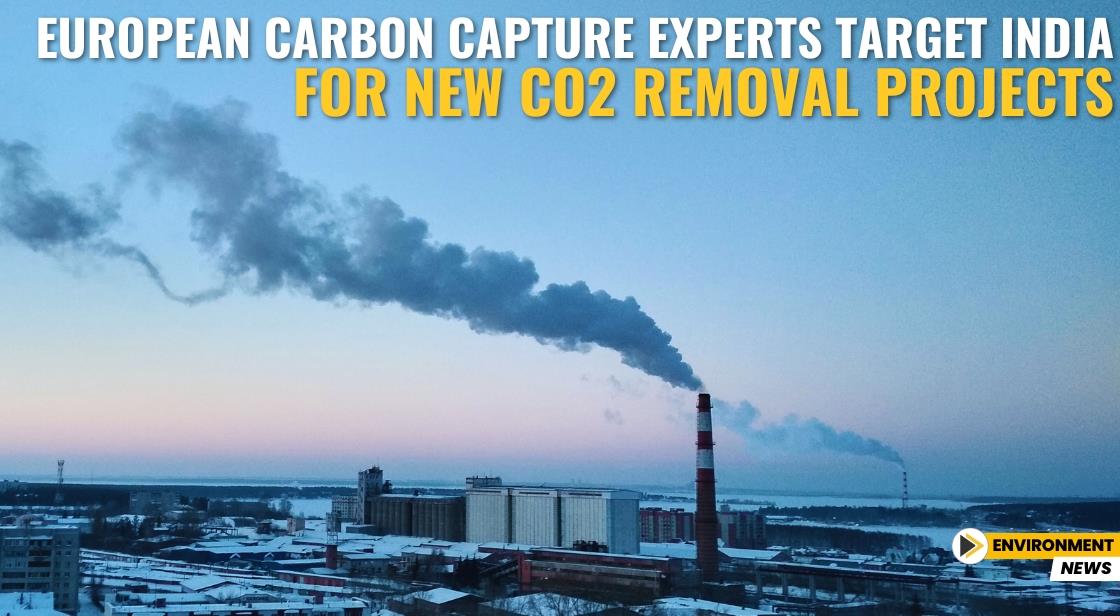European Carbon Capture Experts Target India for New CO2 Removal Projects

News Synopsis
European specialists in capturing carbon dioxide (CO2) from the atmosphere have set their sights on India. This initiative aims to help Indian businesses develop projects that remove CO2 and combat global warming.
Amsterdam-based Remove Seeks Indian Innovation
Remove, an Amsterdam-based organization, has spearheaded this effort. Having secured over €220 million (US$238 million) to support CO2 removal (CDR) projects in Europe, they're now opening their doors to Indian startups.
Successful Indian applicants will gain access to Remove's network of experts and international buyers. They may also be eligible for additional funding. Marian Krueger, Remove's co-founder, expressed confidence in their model's effectiveness and sees immense potential for CDR projects beyond Europe.
Focus on Biochar and Enhanced Weathering
CDR encompasses a variety of methods for capturing already-emitted CO2. Examples include reforestation and specialized filters that directly extract carbon from the air. For India, the focus is expected to be on biochar (charcoal produced by burning organic matter) and "enhanced weathering," a technique where materials like basalt are spread on land to absorb CO2.
The urgency of CDR is stark. Researchers estimate that annual CO2 removal needs to increase from the current 2 billion tons to a staggering 7-9 billion tons to keep global temperatures below the critical 1.5 degrees Celsius threshold.
A Booming Market with Hurdles
A recent consultancy report predicts the CDR market value to surge from $2.27 billion in 2023 to a potential $100 billion by 2030, provided growth barriers are addressed. Currently, CDR projects are costlier than conventional CO2 reduction methods. Their viability hinges on robust carbon markets.
The demand for CDR credits remains limited, primarily concentrated on a few dozen voluntary market buyers, mainly philanthropic organizations, including the US federal government, Microsoft, and Google.
"We all acknowledge the future need for carbon removal," stated Krueger, highlighting the significant long-term potential. However, he acknowledges the current challenges: "Right now, it's about survival until the market finally materializes."
The European Union is actively exploring the possibility of incorporating CDR credits into its emissions trading system. Steve Smith, a CDR expert at Oxford University, emphasizes the need for mainstream adoption: "We're going to need this to become far more widespread than it currently is... I think that will require government intervention to create the conditions for mainstreaming."
Conclusion
The collaboration between European carbon capture specialists and Indian businesses holds immense promise for tackling the global challenge of climate change. By leveraging Remove's expertise and funding alongside India's burgeoning innovation sector, this initiative has the potential to significantly increase CO2 removal efforts.
The focus on biochar and enhanced weathering technologies offers exciting possibilities for India's unique landscape and resources. However, the success of these projects hinges on overcoming key hurdles. Establishing robust carbon markets and wider adoption of CDR credits are crucial for long-term financial sustainability.
Government intervention and collaboration on a global scale are likely necessary to create a supportive environment for CDR technologies to flourish. With commitment and innovation, this initiative can pave the way for a cleaner future for India and the world.
You May Like









